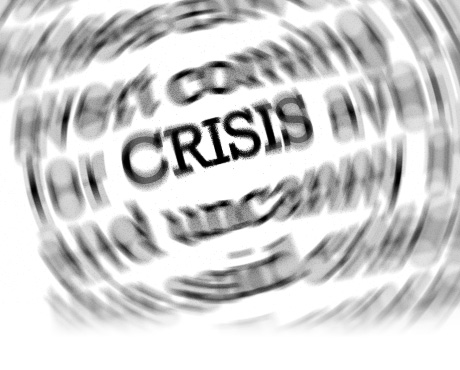Many businesses inevitably undergo some sort of mishap or crisis that requires professional handling. This could be as simple as an unhappy customer or as large as a massive product recall.
Crisis communication is an aspect of doing business that many find uncomfortable, but it’s something that must have a defined protocol in order to effectively employ it.
Find a way to put crisis communications into practice before an actual problem occurs. This proactive approach can head off more trouble when a problem arises and make sure you respond quickly. Even in the unlikelihood of an actual crisis, preparation is always going to be key.
If and when a crisis situation comes up, having a solid and proven protocol can help keep things from getting worse or snowballing out of control.
PR Overview
Look at the Crisis from All Angles, Take Ownership and Responsibility
One of the cornerstones of crisis management is the ability to take a look at the situation as a whole, be transparent, and take ownership. This, more than almost anything else, has the power to make or break the success of the crisis management protocol.
But why is this so important? It’s simple—consumers want transparency. Transparency is perhaps one of the most important factors in crisis management. This enables customers to feel more trusting of the messages put out by the team. Transparency is a part of the ownership process, showing that the company is willing to make sacrifices to make things right.
Moreover, incorporating perspectives from all angles—understanding the situation from every vantage point—is crucial. This holistic approach, much like a 360-degree view, ensures that no stone is left unturned.
By embracing insights from every conceivable angle, your management team can devise strategies that are not only comprehensive but also nuanced, tailored to address the crisis effectively while maintaining public trust.
Always Have a Prepared Team to Handle the Situation
A critical component of crisis management is ensuring that a dedicated crisis response team is always on standby to manage any inconveniences. This team should be well-versed in the company’s crisis management protocol, as well as crisis management communication, helping manage stress, and make some tough decisions during the process.
Having a specialized crisis management team means that when the unexpected occurs, you are not scrambling to assign roles or responsibilities; instead, you have an expert group ready to take action immediately. This preparedness can significantly reduce the response time, enabling a more efficient handling of the situation, which can often limit damage and speed up recovery.
Well-trained crisis communications support teams can make the entire situation more productive and pleasant. So, always ensure that your team is prepared to tackle obstacles with continuous learning and development programs that focus on crisis management.
The Crisis Response Toolkit
Sometimes, the speed with which your team responds to a crisis can make or break the outcome. Having a crafty toolkit at hand can prompt speedier responses.
Make sure your team has a written SOP for these situations as well as a list of questions that could help them get to the bottom of the issue. Get them to craft a sheet of facts about your side of the story and brainstorm responses to multiple questions and scenarios. The important thing is to stick to the truth and don’t blame the other side for your business’ shortcomings.
Don’t Place Blame
Another factor of crisis management is monitoring the “blame game” that some like to play. Placing blame is not productive in most situations, but particularly when it comes to crisis management.
Similar to taking ownership, it’s important not to throw blame around. Even if the root of the problem came from somewhere else, the question should be asked: does placing blame elsewhere solve the problem?
In most cases, the answer to this question is no. Placing blame won’t be productive in a crisis management situation. Therefore, there is no place for it in a company’s protocol for handling problems.
Always Put Those Affected First
In any crisis, there are almost always victims who are adversely affected by whatever the situation is. Let’s use the example of a manufacturer recall in a common model of car.
In this situation, the “victims” are those who own the cars that have the defect. Some of these defects can be potentially dangerous if left untreated, and sometimes the recall comes after a serious issue has already affected multiple victims.
In these scenarios, it’s important for the company to put these victims first. After all, these are the people who are individually affected by the crisis, and their lives are the most affected in a negative way. Handling a crisis includes finding a proper resolution for any and all victims and making sure their needs are met above all else.
By taking these steps and implementing them into the company’s crisis management plan, the potential of fallout and repercussions is greatly reduced. Another important element of crisis management is that practice that can and should be put into it, so that if and when a real crisis does occur there are no questions as to what the first steps should be in managing it.
Should Automation Be Your Go-To Solution?
To handle any crisis situations, many businesses turn to automation. Automation, with its ability to perform repetitive tasks quickly and consistently, can be a powerful tool in the initial stages of your crisis communication plan
However, its effectiveness is contingent on how it’s integrated into the broader crisis management strategy.
Benefits of Automation in Crisis Management
- Timely communication: Automation can significantly speed up response times, allowing for immediate action. This is particularly useful for quickly disseminating information, issuing initial public statements, or activating your crisis management team.
- Consistency: Automated systems ensure that messages and procedures are consistent, reducing the risk of miscommunication or conflicting information during the crisis.
- Availability: Automation works 24/7, providing an immediate response capability that is especially crucial outside of regular business hours, ensuring that the crisis is addressed promptly.
- Scalability: In times of crisis, the volume of inquiries and communications can overwhelm human teams. Automation allows for scaling up operations instantly to manage increased loads, ensuring that all key stakeholders/clients receive timely responses.
Limitations and Considerations
- Lack of empathy: Automated responses cannot provide the empathy and understanding that human interactions can. In situations where stakeholders; and clients are significantly impacted, a personal touch is crucial for effective communication. All in all, having just bots communicate the problem can seriously impact a business’s reputation.
- Complexity and uniqueness of crises: Every crisis is unique, and automated systems may not be flexible enough to handle the nuances and complexities of different situations. Relying solely on automation can lead to inappropriate or inadequate responses.
- Overreliance and complacency: There’s a risk of becoming too dependent on automation, which can lead to complacency in preparing and training staff for crisis management. Human oversight is essential to ensure that automated systems are functioning correctly and appropriately.
It’s safe to say that while automation can manage a crisis, it does not substitute the human part. With both a proper team managing such cases and automation software, you can enjoy the best of both worlds and ensure effectiveness.
No Shame in Getting Extra Help
Working with a PR agency is not just a contingency plan—it’s a strategic plan. An expert agency brings to the table a wealth of experience in gauging public sentiment, having a swift crisis response to unfolding events, and crafting messages that resonate on a human level while conveying key information clearly and concisely.
Their external vantage point allows for an unbiased assessment of the crisis and its implications, ensuring that no aspect of the communication strategy is overlooked or underplayed. With their fingers on the pulse of public opinion, these crisis experts can fine-tune messages to align with evolving sentiments, ensuring that your organization’s response is not only prompt but also empathetic and attuned to the concerns of those affected.
Why Marketing Is Key To Mitigating Damage In Cyber Attacks
A cyberattack can shatter customer trust in minutes, leaving organizations scrambling to maintain...
How to Create a Crisis Communication Template
When a crisis hits your organization, every second counts. A well-structured crisis communication...
Top Crisis Management Mistakes: Common Errors & How To Avoid
Major corporate crises can devastate organizations, damage reputations, and cost billions in...




